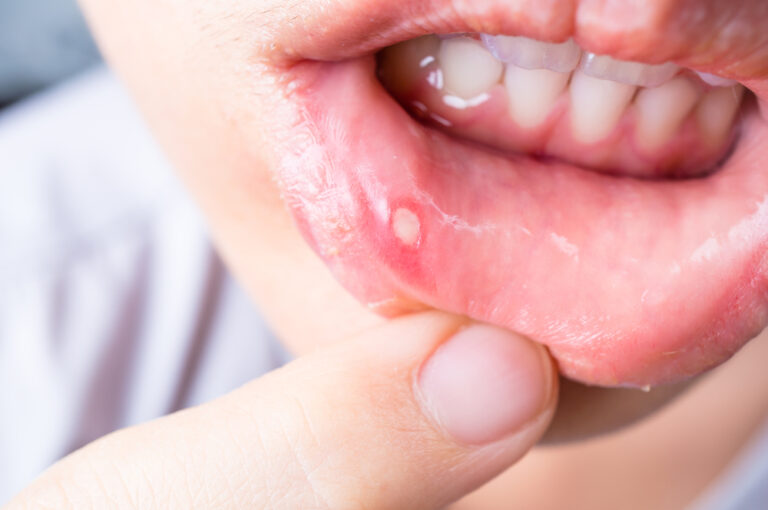You can tell if a mouth ulcer is healing by observing reduced size and redness, decreased pain and discomfort, and a gradual return to normal tissue appearance.
Mouth ulcers, also known as canker sores, are painful sores that appear inside the mouth on areas like the lips, cheeks, gums, tongue, or throat. They can make eating, drinking, and talking uncomfortable. They’re common and often come back, especially among teens and young adults. Usually, they get better on their own in about 1 to 2 weeks.
If you’ve been dealing with a mouth ulcer recently, understanding the different stages of a mouth ulcer can let you know how effective your treatment is.
If you’d like more information on the causes of mouth ulcers, and how to get rid of them as quickly as possible, simply click the links to read the related article.
How to tell if a mouth ulcer is healing?
Mouth ulcers go through different stages while healing, each marked by distinct changes in appearance and symptoms. Knowing these stages can help you track how your ulcer is getting better.
Initial stage (development):
- Appearance: At first, a mouth ulcer usually starts as a small, round or oval sore with a white or yellow centre surrounded by a red border
- Symptoms: Pain and discomfort are common, especially when eating or drinking acidic or spicy foods
Progression stage:
- Days 1-3: The ulcer may become more painful and look more inflamed as it develops
- Days 4-6: The sore usually reaches its biggest size and worst pain during this time
- Symptoms: Pain can get worse, making it hard to eat or speak comfortably
Healing stage:
- Days 7-10: You may see the ulcer starting to heal. The sore begins to get smaller, and the redness around it starts to go away.
- Symptoms: Pain and discomfort start to lessen as it heals
Residual stage:
- Days 11-14: By now, the ulcer is usually smaller or completely healed. It might still be a little sensitive, but you should feel much better.
- Symptoms: Very little or no pain, sometimes some sensitivity
How to tracking the different stages
To understand which stage your mouth ulcer is in, simply keep track of how old the mouth ulcer is in line with the information we’ve provided, and look for signs that the ulcer is reducing in size and becoming less red.
As the ulcer gets smaller , the pain should go away more and more until it’s fully healed.
Frequently asked questions about mouth ulcers
How long does it take for a mouth ulcers to heal?
A typical mouth ulcers heals within 1 to 2 weeks. Larger or more severe ulcers may take slightly longer. Consider seeing your doctor if they don’t go away.
What makes mouth ulcers come back?
Mouth ulcers can come back due to stress, hormone changes, food sensitivities, or health conditions like immune disorders or vitamin deficiencies.
How can I treat a mouth ulcer at home?
You can treat a mouth ulcer at home by rinsing with salt water, applying over-the-counter gels like Bonjela, avoiding spicy and acidic foods, and maintaining good oral hygiene.

